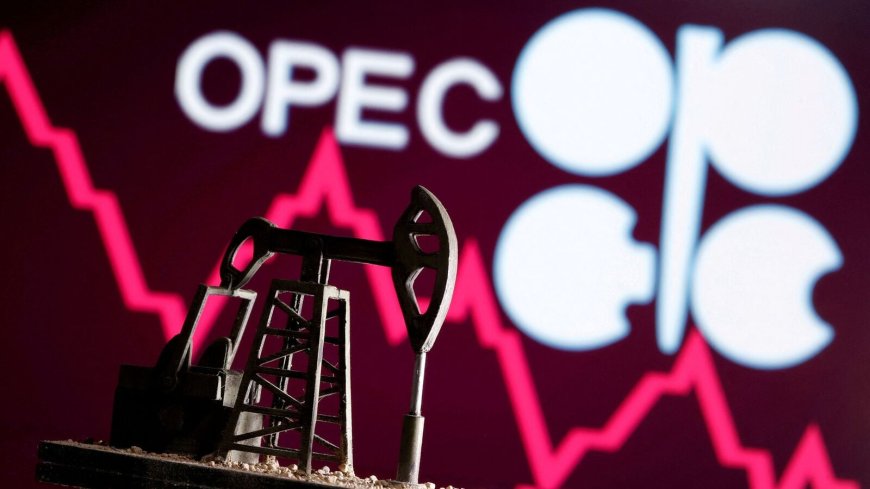OPEC+ Hikes Oil Output for Third Straight Month by 411,000 bpd; Brent Crude Outlook Dips to $67 for 2025
OPEC+ raises oil output by 411,000 bpd for July 2025 amid weakening demand. Analysts forecast Brent crude to drop to $67 in 2025. Market and investor outlook inside.

The Organization of the Petroleum Exporting Countries and its allies, collectively known as OPEC+, have agreed to raise crude oil output for the third consecutive month, increasing production by 411,000 barrels per day (bpd) for July 2025. The decision reflects the group’s strategy to ease production cuts while navigating complex global economic signals, softening demand projections, and growing inventory levels.
This latest hike, announced after a closely watched virtual ministerial meeting, brings cumulative increases since May 2025 to over 1.2 million bpd. Despite this supply-side loosening, analysts warn that Brent crude prices—a global benchmark—are projected to fall to $67 per barrel in 2025, down from current levels near $78, citing sluggish demand growth and rising non-OPEC output.
Strategic Easing Amid Mixed Signals
OPEC+ has been walking a tightrope between maintaining price stability and accommodating calls from large consuming nations to ensure affordable energy. The alliance's phased output recovery began earlier this year as inflation pressures moderated and geopolitical tensions subsided, especially in the Middle East and Eastern Europe.
"The decision reflects a cautious optimism," said Nadia Martin, Senior Oil Analyst at Barclays Commodities. "But the demand recovery is not unfolding as strongly as expected, especially in key Asian markets like China and India. There’s concern that OPEC+ might be overestimating the pace of global economic rebound."
Weakening Demand Outlook
Several recent economic data points suggest a softer demand environment. China's industrial output has slowed, European fuel demand has remained tepid, and U.S. inventory data shows an uptick in crude stockpiles.
According to the International Energy Agency (IEA), global oil demand is expected to grow by only 1.1 million bpd in 2025, a sharp deceleration from the post-pandemic surges seen in 2022–2023. Meanwhile, non-OPEC producers, especially the U.S., Canada, and Brazil, are set to contribute significantly to supply growth.
"This creates a bearish dynamic for crude," noted James Klein, Energy Market Strategist at JP Morgan. "If OPEC+ continues to unwind cuts while global demand slows, we could see a supply glut in the second half of the year, pressuring prices further."
Price Outlook: Brent Crude to Dip Below $70
Brent crude futures have already shown signs of weakness, slipping below $78 following the announcement. The futures market curve indicates expectations of further declines, with long-dated contracts for Q4 2025 pricing Brent at around $67 per barrel.
Market participants cite several reasons for the bearish sentiment:
-
Surging U.S. shale output, which has proven resilient even at lower prices.
-
Subdued global economic growth, with major economies forecast to grow below 2%.
-
Shift towards renewables and EVs, gradually eating into oil demand.
"This is not 2014 all over again," emphasized Linda Zhao, Lead Commodities Strategist at Nomura. "But we’re entering a more balanced market where OPEC’s control over prices is waning amid structural shifts."
Investor Implications: Sector Rotation and Hedging Strategies
For investors, the outlook has mixed implications. Energy stocks, which performed strongly in 2022 and 2023, may face increased volatility. Integrated oil majors with diversified portfolios may prove more resilient, but pure-play exploration and production (E&P) companies could experience margin compression.
"Investors should prepare for more muted returns from the energy sector," said Anand Rathi, Portfolio Manager at Quantum Investments. "With Brent possibly heading to the mid-$60s, we recommend a selective approach—favoring low-cost producers and companies with strong downstream assets."
On the flip side, lower oil prices could benefit transportation, aviation, and manufacturing sectors, easing input costs and supporting margins.
Hedging strategies are also in focus. Many corporate consumers are locking in forward contracts, while institutional investors are rebalancing portfolios to reduce exposure to cyclical energy assets.
Looking Ahead
With global elections, central bank decisions, and potential geopolitical flashpoints ahead, oil markets remain highly sensitive to headline risk. OPEC+ has kept the door open to adjust output again if market dynamics change drastically.
However, with three straight months of supply hikes and a growing chorus of bearish forecasts, the group’s ability to defend higher prices may be tested in the coming quarters.
“The $67 Brent forecast isn’t set in stone,” added Barclays’ Nadia Martin. “But if economic softness persists, we may see even more downside in 2025.”
What's Your Reaction?
 Like
0
Like
0
 Dislike
0
Dislike
0
 Love
0
Love
0
 Funny
0
Funny
0
 Angry
0
Angry
0
 Sad
0
Sad
0
 Wow
0
Wow
0












































































